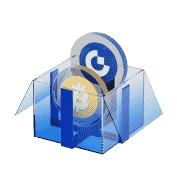- Topic
39k Popularity
13k Popularity
8k Popularity
27k Popularity
76k Popularity
- Pin
- 🎉 The #CandyDrop Futures Challenge# is live — join now to share a 6 BTC prize pool!
📢 Post your futures trading experience on Gate Square with the event hashtag — $25 × 20 rewards are waiting!
🎁 $500 in futures trial vouchers up for grabs — 20 standout posts will win!
📅 Event Period: August 1, 2025, 15:00 – August 15, 2025, 19:00 (UTC+8)
👉 Event Link: https://www.gate.com/candy-drop/detail/BTC-98
Dare to trade. Dare to win. - 📢 Gate Square Exclusive: #WXTM Creative Contest# Is Now Live!
Celebrate CandyDrop Round 59 featuring MinoTari (WXTM) — compete for a 70,000 WXTM prize pool!
🎯 About MinoTari (WXTM)
Tari is a Rust-based blockchain protocol centered around digital assets.
It empowers creators to build new types of digital experiences and narratives.
With Tari, digitally scarce assets—like collectibles or in-game items—unlock new business opportunities for creators.
🎨 Event Period:
Aug 7, 2025, 09:00 – Aug 12, 2025, 16:00 (UTC)
📌 How to Participate:
Post original content on Gate Square related to WXTM or its - 🎉 Attention Alpha fans! Alpha’s latest TAG airdrop goes live today at 10 AM—first come, first served!
💰 Don’t forget to share your airdrop or points screenshot on Gate Square with the hashtag #ShowMyAlphaPoints# for a chance to win a share of the $200 token mystery box!
🥇 Top points winner: $100
✨ 5 outstanding posts: $20 each
📸 Pro tips:
Add a caption like “I earned ____ with Alpha. So worth it”
Share your points-earning tips or redemption experience for a better chance to win!
📅 Activity deadline: August 10, 18:00 UTC
Let’s go! See you tonight: https://www.gate.com/announcements/article - Hey fam—did you join yesterday’s [Show Your Alpha Points] event? Still not sure how to post your screenshot? No worries, here’s a super easy guide to help you win your share of the $200 mystery box prize!
📸 posting guide:
1️⃣ Open app and tap your [Avatar] on the homepage
2️⃣ Go to [Alpha Points] in the sidebar
3️⃣ You’ll see your latest points and airdrop status on this page!
👇 Step-by-step images attached—save it for later so you can post anytime!
🎁 Post your screenshot now with #ShowMyAlphaPoints# for a chance to win a share of $200 in prizes!
⚡ Airdrop reminder: Gate Alpha ES airdrop is - Gate Futures Trading Incentive Program is Live! Zero Barries to Share 50,000 ERA
Start trading and earn rewards — the more you trade, the more you earn!
New users enjoy a 20% bonus!
Join now:https://www.gate.com/campaigns/1692?pid=X&ch=NGhnNGTf
Event details: https://www.gate.com/announcements/article/46429


Cellula: Virtual Mining Innovation Web3 Asset Distribution Model
From Virtual Mining to Fair Asset Distribution: Analyzing Cellula's Innovative Design
Since 2017, the threshold for asset issuance in the Web3 space has significantly decreased. However, traditional ID0 and IC0 models have exposed many fairness issues, and people have been seeking a more fair and reliable asset issuance protocol. The Cellula project offers a new perspective to address this issue by implementing an asset distribution layer that simulates POW, utilizing virtual proof of work (vPOW) to "mine" the asset distribution process, thereby simulating a more equitable asset allocation paradigm similar to Bitcoin.
The core of Cellula lies in replacing the traditional POW hash calculation with a computation method that yields unpredictable results - Conway's Game of Life. In Cellula, players need to allocate computing power to a virtual digital entity called "BitLife". Simply put, it's like breeding cell clusters in a petri dish; over time, the more surviving cells in a player's dish, the higher the corresponding mining power, thus increasing the likelihood of earning mining rewards.
Conway's Game of Life is a two-dimensional grid game where each cell has two states: alive and dead, evolving continuously according to specific rules. Cellula divides the "petri dish" into 9*9=81 squares, with each cell in a square having alive/dead states. Players need to choose an initial pattern for the petri dish, which is equivalent to randomly selecting an initial state for their petri dish. With possible initial states reaching up to 2^81, this offers participants a vast selection space.
The cell state of BitLife changes with the increase in block height. Cellula allocates computing power based on the state of BitLife at different block heights. At a given block height, the more surviving cells there are in BitLife, the higher the computing power it possesses, which is equivalent to creating a virtual mining machine. The player's goal is to construct or purchase the BitLife that is most likely to receive mining rewards.
Cellula also introduces a charging mechanism and a lottery function, as well as a variable rate progressive Dutch auction ( VRGDAs ) pricing algorithm to balance the game ecosystem and prevent scientists from infinitely minting BitLife.
From the perspective of player competition, Cellula simulates the operation of the Bitcoin mining machine market but lowers the threshold for mining machine research and development. A dynamic balance is formed between scientists, MEV players, and ordinary participants, with no single party able to fully control the market.
Overall, Cellula provides a fairer and more transparent paradigm for Web3 asset issuance through innovative gamified design, which can be called "a social experiment paying tribute to Bitcoin Mining."